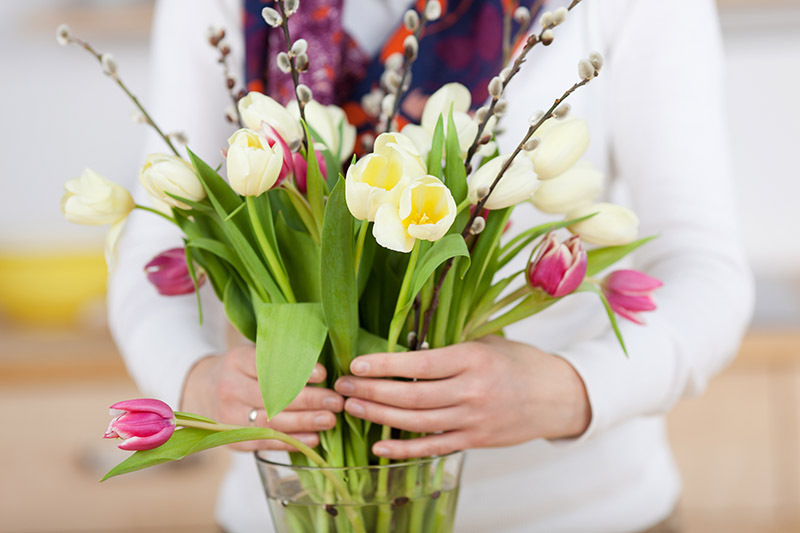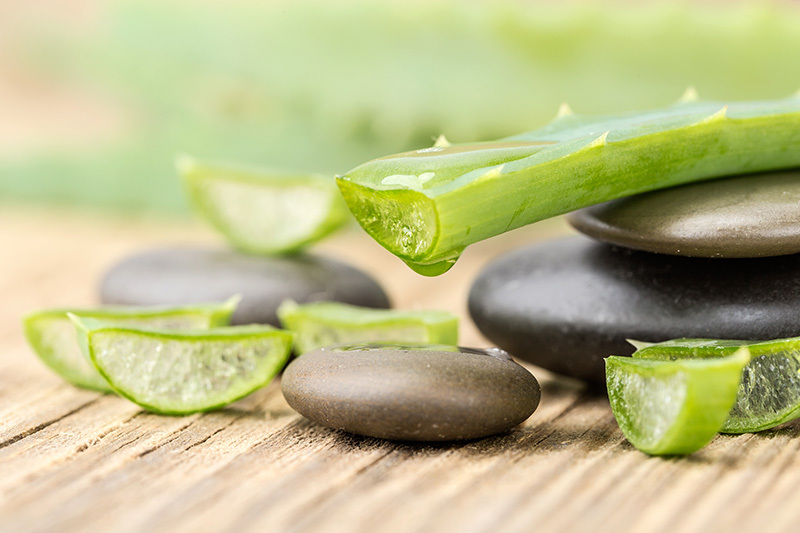Caring for Hydrangeas with Confidence: Tips and Tricks
Posted on 18/08/2025
Caring for Hydrangeas with Confidence: Tips and Tricks
Known for their voluminous blooms and vibrant colors, hydrangeas are a favorite among gardeners of all skill levels. However, achieving a thriving hydrangea display does require understanding specific care techniques. If you're determined to grow healthy, stunning hydrangeas, this comprehensive guide is packed with clear advice, practical tips, and expert tricks. Read on for everything you need to know about confidently caring for hydrangeas from planting to pruning!
Table of Contents
- An Introduction to Hydrangeas
- Types of Hydrangeas to Grow
- Choosing the Right Site & Soil
- Watering & Fertilizing Hydrangeas
- Pruning Hydrangeas with Confidence
- Dealing with Pests and Diseases
- Controlling the Color of Your Blooms
- Common Problems and Smart Solutions
- Caring for Hydrangeas Through Winter
- Conclusion: Growing Hydrangeas with Assurance
An Introduction to Hydrangeas
Hydrangeas, belonging to the genus Hydrangea, are deciduous and semi-evergreen shrubs renowned for their showy flower heads. These plants are native to Asia and the Americas and have been a staple in gardens for centuries. Their blooming period, which spans from spring to late fall, fills landscapes with large clusters of pinks, blues, purples, and whites.
With the correct hydrangea care tips, gardeners can enjoy lush, healthy blooms year after year. Understanding the basics of hydrangea care enables you to nurture your plants with confidence.
Types of Hydrangeas to Grow
Before diving into care routines, it's important to choose the right hydrangea variety for your garden. Each type has characteristics that impact both care and appearance.
1. Hydrangea macrophylla (Bigleaf Hydrangea)
- Highlights: Very popular; mophead and lacecap blossoms.
- Colors: Blue, pink, and purple (color varies by soil pH).
- Care tips: Prefers partial shade; requires rich, well-drained soil.
2. Hydrangea paniculata (Panicle Hydrangea)
- Highlights: Cone-shaped white flowers turning pink or red.
- Drought-tolerant and sun-loving.
- Best for: Beginners, due to hardiness.
3. Hydrangea arborescens (Smooth Hydrangea)
- Highlights: Native to North America; produces huge snowball blooms.
- Care: Tolerates various soils; blooms on new wood.
4. Hydrangea quercifolia (Oakleaf Hydrangea)
- Highlights: Oak-shaped leaves, stunning fall color, white blooms fading to pink.
- Care: Adapts to sun and shade; prefers moist soil.
5. Hydrangea serrata (Mountain Hydrangea)
- Highlights: Similar to bigleaf but hardier; smaller lacecap blooms.
- Best for: Colder climates.
Pro Tip: When caring for hydrangeas, knowing their type is essential for successful pruning and bloom control.
Choosing the Right Site & Soil
Location, Location, Location!
Hydrangeas thrive in spots with morning sun and afternoon shade. Too much direct, intense sunlight can cause leaf scorch, while inadequate light may limit flowering.
- North or east-facing borders are ideal.
- Avoid planting under dense tree canopies where moisture and light are limited.
Soil Preparation: The Secret Ingredient
The right soil is a key factor in hydrangea plant care:
- Hydrangeas prefer loamy, well-drained, and organic-rich soil.
- Soil pH affects flower color: acidic soils yield blue flowers; alkaline soils produce pink blooms.
- Add compost or well-rotted manure before planting to improve texture and fertility.
- Proper drainage is vital. Raised beds or mounds help prevent root rot in heavy clay soils.
Planting Hydrangeas with Confidence
- Dig a hole twice as wide and just as deep as the root ball.
- Mix native soil with compost or peat moss.
- Set the plant so the crown is slightly above soil level.
- Backfill gently, tamp down, and water thoroughly.
- Space plants adequately (3-10 feet apart, depending on variety).
Tip: Mulch around the base with shredded bark or pine needles to conserve moisture, suppress weeds, and regulate soil temperature.
Watering & Fertilizing Hydrangeas
Hydrangea Watering Techniques
Hydrangeas are aptly named for their love of water ("hydra"). Yet, balance is crucial--you want neither parched nor soggy roots.
- Deep, infrequent watering is best: Water 1-2 times weekly, increasing during hot or dry spells.
- Soak the soil to a depth of 8-12 inches. Early morning is the best time.
- Mulch helps retain soil moisture.
- Avoid overhead watering to minimize leaf diseases.
Fertilizing Hydrangeas for Maximum Blooms
- Apply a balanced, slow-release fertilizer (10-10-10) in spring as new growth appears.
- Feeding again after the initial bloom may encourage re-bloom varieties.
- Don't over-fertilize--too much nitrogen results in lush leaves, but fewer flowers.
- For blue blooms, use fertilizers low in phosphorus and high in potassium.
Always water before and after feeding to prevent root burn.
Pruning Hydrangeas with Confidence
Pruning hydrangeas doesn't need to be intimidating. The right timing and technique depend on the species, so always identify your hydrangea first!
General Pruning Guidelines
- Remove dead, weak, or crossing branches in late winter or early spring.
- Prune for shape and size after flowering for Bigleaf and Oakleaf hydrangeas (these bloom on old wood).
- Cut back Smooth and Panicle hydrangeas in late winter--they bloom on new wood and respond well to hard pruning.
Step-by-Step Hydrangea Pruning Tips
- Sanitize your pruners before beginning.
- Start by eliminating deadwood and diseased stems at the base.
- Shape as needed, but avoid excessive cuts on old-wood bloomers.
- Remove spent flowers to improve appearance and stimulate further blooms (especially in re-blooming varieties).
Pro Insight: Aim for an open structure to improve air circulation and reduce disease risk.
Dealing with Pests and Diseases
Common Hydrangea Pests
- Aphids: Cause curling leaves and sticky residue.
- Spider Mites: Fine webs and speckled foliage indicate their presence.
- Slugs and Snails: Eat holes in leaves, especially in moist climates.
- Hydrangea Scale and Leaf-Tier Moths: Cause discoloration and damage stems or flower buds.
What to Do:
- Spray with horticultural soap or neem oil for soft-bodied insects.
- Remove slugs and snails by hand or with traps.
- Encourage beneficial insects like ladybugs.
Hydrangea Diseases & Prevention
- Powdery Mildew: White powder on leaves; prune for air flow and avoid overhead water.
- Leaf Spot (Cercospora, Anthracnose): Round brown or purple spots; remove affected leaves and promote good air circulation.
- Root Rot: Usually due to poor drainage; amend soil or replant if severe.
Key tip: Mulch and careful watering are your best allies in minimizing disease.
Controlling the Color of Your Hydrangea Blooms
One of the most exciting aspects of hydrangea care is manipulating bloom colors--particularly for Hydrangea macrophylla (Bigleaf) and Hydrangea serrata (Mountain).
Here's how:
- For Blue Blooms: Acidic soil (pH 5.2-5.5).
- Add aluminum sulfate or organic matter like pine needles, coffee grounds, or peat moss.
- For Pink Blooms: Alkaline soil (pH 6.0-6.2).
- Add garden lime to raise soil pH and reduce available aluminum.
- White and Green Varieties: Color isn't affected by pH, so just focus on healthy soil.
Note: Soil adjustments may take a full season or more to show dramatic results. Use a home soil pH tester for best results.
Common Problems and Smart Solutions
Why Won't My Hydrangeas Bloom?
- Pruned at the wrong time, cutting off buds.
- Too much shade--move to a lighter spot.
- Over-fertilization (lots of leaves, few flowers).
- Frost damage to emerging buds.
Solution: Identify your hydrangea variety and prune accordingly; protect buds with frost cloth in early spring if needed.
Brown Leaves or Wilting?
- Likely underwatering or afternoon sun scorch.
- Root rot can cause sudden wilting--improve drainage or replant if suspected.
Yellow Leaves?
- Indicates overwatering, poor drainage, or nutrient deficiency--test your soil and adjust care routine.
Caring for Hydrangeas Through Winter
Hydrangea winter care ensures your plants survive and bloom robustly the following year:
- Keep the root zone mulched with 4 inches of bark, straw, or leaves, especially in cold climates.
- In very cold regions, protect Bigleaf and Oakleaf hydrangeas by wrapping stems in burlap or making a wire frame and filling it with dry leaves.
- Avoid late-season fertilizing--stimulates vulnerable new growth.
Mountain and Panicle hydrangeas are generally more cold-tolerant, but young plants benefit from extra winter mulch.
Conclusion: Growing Hydrangeas with Assurance
Caring for hydrangeas with confidence is all about understanding your plants' specific needs and responding proactively. Here's a quick recap of expert hydrangea plant care tips:
- Choose varieties suitable for your climate and garden style.
- Prioritize well-drained, rich soil and proper site selection.
- Water deeply and consistently, and mulch for moisture retention.
- Fertilize moderately, adjusting pH for desired bloom color.
- Prune according to the hydrangea type for the best flowers.
- Monitor for pests and diseases; act swiftly when issues appear.
- Provide winter protection, especially for tender hydrangeas.
Follow these detailed tips, and your hydrangea bushes will not only survive--they'll thrive, rewarding you with spectacular blooms season after season. Happy gardening!
Frequently Asked Questions about Hydrangea Care
- How often should hydrangeas be watered?
Water once or twice a week, soaking the soil deeply; increase frequency during dry periods. - When is it best to fertilize hydrangeas?
Early spring, as new growth starts, and again after the first round of blooms for re-blooming types. - Can I grow hydrangeas in pots?
Yes! Use a large pot with ample drainage and rich potting soil; water more frequently. - Should I deadhead hydrangeas?
Deadheading (removing spent blooms) encourages neatness and further flowering in some varieties.
By applying these hydrangea gardening tips, you can enjoy confident hydrangea care every season!


Latest Posts
Three Hassle-Free Strategies for Fresh Blooms
Caring for Hydrangeas with Confidence: Tips and Tricks
Red Roses on Valentine's: A Testament to Lasting Love
Brighten Your Workspace with 10 Effortless Office Plants
Journey into the Meaning of Your Birth Flower and Its Impact on You





